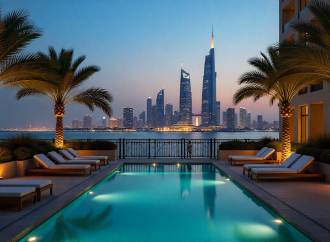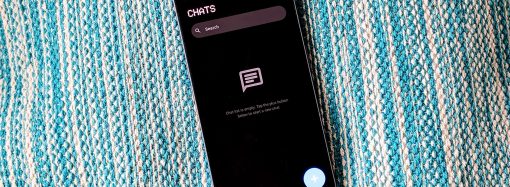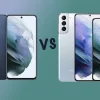In today’s digital-first world, personalization is no longer a luxury — it’s an expectation. Shoppers want more than just options; they want control. They want to see, explore, and customize products in real time. This shift in consumer behavior is what’s driving the explosive growth of 3D product configurators across industries. From furniture and fashion
In today’s digital-first world, personalization is no longer a luxury — it’s an expectation. Shoppers want more than just options; they want control. They want to see, explore, and customize products in real time. This shift in consumer behavior is what’s driving the explosive growth of 3D product configurators across industries.
From furniture and fashion to automotive and electronics, businesses are turning to 3D configurator software to transform the way they sell. Whether it’s a sleek pair of sneakers, a customizable car, or a modular sofa, 3D product customizers allow customers to create their perfect product with a few clicks or taps — and the results are game-changing.
In this blog, we’ll explore the what, why, and how of product configurator 3D technology, including the rise of VR product configurator and AR product configurator solutions. Let’s dig in.
What is a 3D Product Configurator?
A 3D product configurator is an interactive tool that allows customers to view and modify a product in a virtual 3D environment. Instead of relying on static images or long product lists, users can:
-
Rotate and zoom in on the product
-
Change colors, materials, and components
-
Add or remove features
-
View their customizations in real time
This level of engagement offers a dynamic and personalized shopping experience that boosts confidence and leads to more conversions. In fact, studies have shown that interactive product visuals can increase purchase intent by up to 80%.
Benefits of Using a 3D Product Customizer
Integrating a 3D product customizer provides a wide range of advantages:
1. Improved User Experience
Customers can interact with products more naturally and confidently. Whether on desktop or mobile, they get instant feedback and visual clarity.
2. Boosted Sales and Conversion Rates
Interactive visuals have been shown to increase time-on-page and conversion rates. When customers can “see” their ideal product, they’re more likely to buy.
3. Fewer Returns
Buyers who can explore all aspects of a product are less likely to be surprised upon delivery. This dramatically reduces post-purchase returns and refunds.
4. Reduced Operational Costs
By using one 3D product configurator, you eliminate the need for multiple product photography sessions, samples, and physical demos.
5. Enhanced Brand Perception
Businesses that offer innovative digital experiences are perceived as modern, tech-forward, and customer-centric.
Introducing AR and VR Product Configurators
The next frontier in digital product customization is immersive technology — specifically AR (Augmented Reality) and VR (Virtual Reality).
AR Product Configurator
An AR product configurator enables customers to project a 3D version of the customized product into their real-world environment via smartphone or tablet. This is especially valuable in industries like home decor and fashion. For example, shoppers can place a custom chair in their living room or preview a personalized watch on their wrist.
VR Product Configurator
A VR product configurator takes immersion to the next level. Users can enter a virtual space — like a showroom — where they interact with and customize products in full 3D. This is a powerful tool for trade shows, luxury retail, automotive showrooms, or real estate developers.
Both options reduce friction in the buying journey and make complex or high-investment products easier to explore and trust.
Key Features to Look For in 3D Configurator Software
When choosing the right 3D configurator software, consider the following essential features:
-
High-Quality Rendering: Realistic lighting, textures, and smooth model transitions.
-
Customization Rules Engine: Logic that prevents incompatible combinations.
-
AR/VR Support: Extend the experience with immersive tools.
-
E-commerce Integration: Seamless connection with platforms like Shopify, Magento, or WooCommerce.
-
Performance Optimization: Fast loading and responsive behavior across devices.
-
Analytics Dashboard: Track user behavior, popular configurations, and conversion metrics.
-
Scalability: Ability to handle a growing product catalog with hundreds or thousands of variants.
At HexaCoder, we offer tailored 3D configurator solutions that integrate these features and more. Whether you’re launching a simple customizable product or an entire AR-powered virtual store, we help you deliver next-generation experiences with ease.
Industries Benefiting from Product Configurator 3D Technology
A wide range of industries are leveraging product configurator 3D tools to improve their offerings:
-
Furniture – Custom fabric, wood finish, size, and layout
-
Apparel & Footwear – Personalized colors, prints, embroidery, or sole designs
-
Automotive – Fully interactive vehicle customizations for interiors, exteriors, and performance packages
-
Manufacturing & Industrial Equipment – Modular parts, materials, and add-on configurations
-
Jewelry & Accessories – Real-time previews of stones, metals, and engravings
No matter your sector, a 3D configurator can help bridge the gap between customer imagination and purchase intent.
How Does a 3D Configurator Work?
Behind the scenes, a 3D configurator uses 3D modeling and real-time rendering to simulate every possible version of a product based on the options available. These models can be rendered directly in a web browser, mobile app, or integrated into virtual and augmented reality platforms.
Here’s a basic workflow:
-
Create the 3D model of the product using tools like Blender, 3ds Max, or Maya.
-
Upload the model to a configurator platform or integrate it into your custom-built tool.
-
Define the parameters users can customize (e.g., color, material, dimensions).
-
Embed the configurator on your website, app, or in-store device.
-
Track behavior and use analytics to refine the experience and offerings.
Modern 3D configurator software makes this process streamlined and scalable, even for large catalogs with thousands of variations.
Why Every Brand Needs a 3D Product Customizer
A 3D product customizer brings tremendous value across multiple areas of your business:
1. Improved Customer Engagement
Traditional product listings are passive. A 3D configurator makes the shopping experience interactive, encouraging customers to spend more time on your site — and the longer they stay, the more likely they are to buy.
2. Higher Conversion Rates
When customers can see exactly what they’re getting, they feel more confident in their purchase. This reduces hesitation and shortens the decision-making process. Many companies report conversion rate increases of 30–50% after implementing a product configurator 3D solution.
3. Fewer Returns and Mistakes
By providing an accurate, customizable preview of the product, customers are less likely to receive something that doesn’t match their expectations. This leads to fewer returns and greater customer satisfaction.
4. Reduced Operational Costs
Forget photographing every product variant or producing physical samples. A single high-quality 3D model can generate infinite combinations, saving time and resources.
5. Competitive Advantage
Offering a 3D configurator sets your brand apart. It shows innovation, responsiveness to customer needs, and a commitment to quality experience.
The Next Frontier: AR and VR Product Configurators
The evolution of 3D product configurators is happening right now through Augmented Reality (AR) and Virtual Reality (VR).
AR Product Configurator
An AR product configurator allows customers to project a customized product into their physical environment using a smartphone or tablet. This is especially valuable for industries like home decor, furniture, and fashion. Imagine designing a custom couch and then seeing how it looks in your living room — all before clicking “Buy.”
VR Product Configurator
A VR product configurator goes even further, placing the user in a fully immersive environment. This is ideal for high-value purchases like cars, industrial equipment, or luxury goods. Customers can walk around, inspect, and interact with their customized product as if they were in a physical showroom — all from the comfort of their home or a VR headset station in-store.
These technologies are not just trends — they’re redefining the future of commerce.
Choosing the Right 3D Configurator Software
With so many options available, how do you choose the right 3D configurator software? Here are a few essential features to look for:
-
High-performance 3D rendering with realistic textures and lighting
-
Cross-platform compatibility (desktop, mobile, tablet, AR/VR)
-
E-commerce integration (Shopify, WooCommerce, Magento, etc.)
-
Real-time analytics and customer behavior tracking
-
Scalability for growing product catalogs
-
User-friendly interface for both customers and back-end users
At HexaCoder, we build custom 3D product configurators tailored to your brand and industry needs. Whether you’re launching a new product line or transforming an entire catalog, we can help you deliver next-level experiences with ease.
1. Furniture Industry
The furniture industry has embraced 3D product configurators to meet growing demand for personalized living spaces. Customers can now customize everything — from fabric type and color to leg style and sofa configuration — and visualize changes in real-time. This reduces uncertainty, enhances customer confidence, and minimizes returns. Additionally, with AR product configurators, users can place customized furniture in their room using a smartphone, ensuring size and style compatibility. Retailers benefit by showcasing a large variety of options without needing physical inventory. This technology also speeds up the buying process and increases customer satisfaction, making it a must-have in modern furniture retail.
2. Apparel & Footwear Industry
In the fashion industry, personalization is more than a trend — it’s a key differentiator. 3D product customizers allow shoppers to personalize footwear, jackets, T-shirts, and more with custom colors, fabrics, laces, logos, and even embroidery. Real-time visualization ensures that customers know exactly what they’re getting, reducing size and style errors. This is especially powerful in e-commerce, where product feel and fit are harder to convey. When paired with AR try-ons, customers can preview how items will look on them. For brands, configurators open up new revenue streams while offering a unique, engaging customer experience that boosts brand loyalty.
3. Automotive Industry
The automotive sector was one of the first to adopt product configurator 3D technology, allowing customers to build their dream vehicles from the ground up. Users can customize every detail — from paint color and wheel design to interior trim and tech packages. With high-fidelity 3D configurator software, customers experience the thrill of designing their vehicle in a virtual showroom. VR product configurators elevate this further by immersing users in the cockpit or walking around their configured model. This not only boosts engagement but also reduces dealership load and sales friction. It’s a powerful tool for lead generation and conversion in the auto market.
4. Manufacturing & Industrial Equipment
Manufacturers of complex products like machinery, HVAC systems, or modular shelving often struggle to present options clearly. 3D configurators solve this by letting customers explore different modules, configurations, materials, and performance specs interactively. Clients can build their equipment visually, ensuring technical and functional requirements are met before ordering. This significantly reduces back-and-forth, quote errors, and production delays. For B2B sales teams, configurators act as visual proposal tools that simplify the sales process. Integrating product configurator 3D systems into websites or sales portals improves customer autonomy while maintaining accuracy, and ultimately enhances customer satisfaction and operational efficiency.
5. Jewelry & Accessories
Jewelry buyers often seek one-of-a-kind items that reflect personal style, emotions, or special occasions. A 3D product configurator enables customers to design personalized rings, necklaces, watches, and more by selecting gemstone type, metal finish, engravings, and sizing. Real-time previews let buyers view intricate details before purchase, improving trust and emotional engagement. High-resolution rendering ensures photorealistic visuals, especially valuable in high-end e-commerce. With AR product configurators, users can virtually “try on” items using a phone camera. This luxury-level customization experience drives higher conversion rates and builds long-term loyalty, especially for retailers targeting engagement rings, luxury watches, and meaningful gifts.
Conclusion: 3D is the Future — Are You Ready?
As we step further into the digital era, businesses must prioritize personalization and immersive experiences. A well-executed 3D configurator doesn’t just improve customer experience — it transforms your entire sales process.
From 3D product customizers to VR and AR product configurators, the technology is here. The question is: are you ready to embrace it?
If you want to future-proof your business and lead the way in digital innovation, now is the time to invest in 3D configurator software. At HexaCoder, we bring your products to life in stunning, interactive 3D.
📧 Contact us today at info@hexacoder.com
🌐 Visit our website to explore live demos, case studies, and more
















